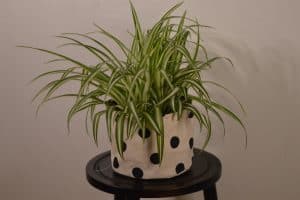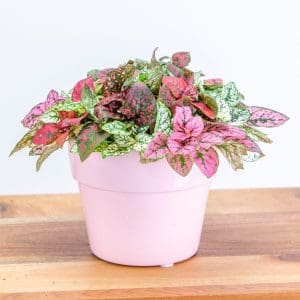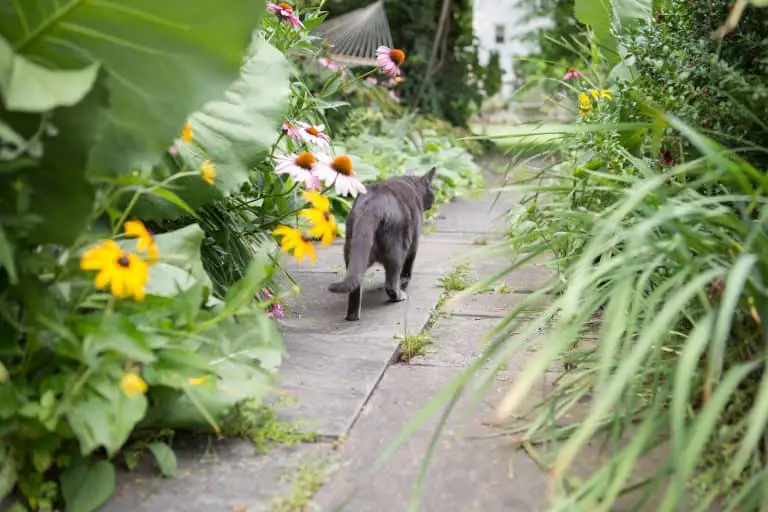As a plant lover and pet parent, I’ve always been cautious about the greenery I bring into my home. It’s crucial to find the perfect balance between beautifying my space and ensuring the safety of my furry friends. That’s where pet-safe plants come into play. They’re not just a trend; they’re a necessity for households like mine, where whiskers and paws are as much a part of the family as the people.
Navigating the world of houseplants can be tricky, especially with over 78 million dogs and 85 million cats sharing our homes across the US. It’s not just about aesthetics; it’s about health and harmony. I’ve learned that while many plants add a touch of nature to our living spaces, some can be harmful to our pets if ingested. That’s why I’m dedicated to sharing my knowledge on pet-safe plants, ensuring your green companions are as harmless as they are charming.
The Importance of Pet-Safe Plants

As a long-time lover of both flora and fauna, I understand the profound bond between pet owners and their animal companions. Cats and dogs are more than pets; they’re family. While we nurture them with care, it’s just as essential to ensure that our homes remain safe territories for them to explore. That’s where the need for pet-safe plants comes in.
Creating a Safe Environment with Non-Toxic Plants
When incorporating greenery into my home, I make it a priority to choose non-toxic plants for pets. An innocent nibble on the wrong type of leaf can lead to a trip to the vet, something I, like many pet parents, am keen to avoid. Prayer plants and spider plants have graced my living spaces with their vibrant foliage without endangering my furry friends.
Friendly Flora: Pet Friendly Plants That Thrive Indoors
Not all beautiful plants come with risks for pets. I’ve found that species like the leopard plant and the polka dot plant offer that sought-after splash of color and are completely pet friendly. These plants don’t just survive indoors; they thrive, especially when placed on a plant stand to catch the natural light.
There’s nothing quite like the peace of mind that comes with safe gardening for animals. By selecting the right houseplants, I construct an environment that’s joyful for both my pets and me. Bright indirect light is perfect for the stunning prayer plant, with its distinctive leaf patterns—a guaranteed safe and eye-catching choice for any pet owner’s home.
Remember, while it’s crucial to water your plants regularly, the type of water matters too. Distilled water or rainwater free from fluoride and chlorine is best for sensitive varieties like the spider plant, ensuring it can filter your home’s air without any worry of toxic residue.
Ensuring the safety of your pets doesn’t mean sacrificing the ambiance that lush foliage brings. With a plethora of pet safe plants available, you can relish the joys of pet ownership alongside a passion for gardening. It’s a delightful balancing act that promises a harmonious living space for all.
Common Houseplants to Avoid

As a devoted plant parent and pet owner, I’m always on the lookout for pet-safe plants that can mingle in my living space without posing a threat to my furry friends. Through my journey of safe gardening for animals, I’ve learned that some popular houseplants can have some not-so-friendly consequences. It’s crucial to know which plants to keep out of your pet’s reach.
Toxicity in Popular Houseplants
Many beloved indoor plants can be toxic to cats and dogs. Lilies, for instance, are stunning flowering plants that can cause severe kidney damage in cats. Ivy and Elephant’s Ears are also a no-go; they can induce a range of symptoms from skin irritation to digestive distress when ingested by pets. And that beautiful ZZ plant you’ve seen online? It’s a common culprit for causing irritation and nausea in pets if they get too curious.
Surprisingly, some plants that thrive in our homes are the very ones we ought to worry about. Monstera, with its lush foliage and distinctive cuts, or the elegant fiddle-leaf fig might catch your eye, but they’re definitely not pet friendly. Consuming large quantities of these plants can lead to vomiting, difficulty swallowing, and excessive drooling in both cats and dogs.
Finding Alternatives
Fortunately, as pet owners, we don’t have to forego the joys of indoor gardening altogether. Instead, opt for non-toxic plants like the ever-resilient spider plant, which tolerates low light and is safe for both cats and dogs. The vibrant polka dot plant and the serene prayer plant offer a splash of color and are pet safe, requiring only natural light and regular watering.
When I arrange my indoor plants, I prefer to set them higher up on a plant stand or even in a hanging basket, well out of paw’s reach. This practice is key especially for plant lovers who cherish both their green babies and their four-legged family members. It’s all about creating a balance where both can thrive in the same environment.
I’ve also embraced the practice of using distilled water when tending to my sensitive pet-friendly plants. And for those who might be forgetful, picking a sturdy areca palm or a spider plant could be a smart move since they’re quite forgiving if you miss a watering session now and then.
Non-Toxic Houseplants for Pets

If you’re anything like me, ensuring a safe environment for your pets while maintaining a green and lively space is a priority. That’s why I’ve dedicated time to discover a variety of non-toxic plants for pets that can beautify my home without posing any risks to my furry friends.
Pet-Safe Plants for Peace of Mind
Identifying pet-friendly plants shouldn’t be a chore. I’ve found that the spider plant is not only easy to care for with its resilience in various lighting conditions, but it’s also completely safe for cats and dogs. With its graceful arching leaves and ability to thrive in partial shade, it’s a perfect choice.
I’ve also fallen for the charm of the polka dot plant, with its whimsical, spotted foliage adding a playful touch to my plant stand. Placed in natural light without direct exposure, these plants stay happy and fresh.
For pet owners seeking to add some flowering plants that are harmless to your pets, the prayer plant is a fantastic option. Its leaves fold in the evening – a fascinating feature – and it’s perfectly pet safe.
The Bright Side to Indirect Light
Pet friendly plants often do well in indirect light. Among my favorites is the dependable Boston fern, which appreciates a cool place with high humidity and indirect light. This lush fern makes a stunning addition and provides a sense of the outdoors, indoors.
The areca palm, a bigger plant that can make a statement in the right pot, is another non-toxic solution for dog owners. It’s not just towering and dramatic; its fondness for bright, indirect light makes it a flexible companion in many homes.
As for those with less light, worry not. The cast iron plant, living up to its name, withstands low-light conditions and still emerges as a pet safe, glossy green beauty. Watering it sparingly is the key to seeing this hardy plant thrive even in the shadiest corners.
How to Create a Pet-Friendly Garden

Creating a garden where both you and your pets can thrive requires a bit of forethought and understanding of which plants are non-toxic to your furry friends. Pet-safe plants are not only beneficial for the wellbeing of your pets but also add to the lush green atmosphere of your home. Let me walk you through some crucial steps to ensure your garden is safely enjoyed by everyone.
Selecting Non-Toxic Plants for Pets
The first step in creating a pet-friendly garden is to choose non-toxic plants for pets. This can mean incorporating plants like the spider plant, polka dot plant, and prayer plant – all of which are non-toxic and add a variety of shapes and textures to your indoor oasis. When I’m looking for flowering plants that won’t harm my pets, I always consider the African violet or the phalaenopsis orchid. Both offer beautiful blossoms without the worry.
Ideal Placement for Pet-Safe Plants
Once you’ve selected the right plants, you need to consider where to place them. Natural light is vital, but so is keeping certain plants out of your pet’s reach. Hanging planters can be a fantastic way to showcase something like the trailing foliage of a spider plant while keeping it away from curious paws. Using a plant stand is another great strategy, which can elevate pet-friendly plants to not only keep them safe from animals but also to provide different levels of visual interest to the space.
Maintenance of Your Pet-Friendly Garden
Maintenance of pet-safe plants differs depending on the species. It’s best to water regularly with distilled water to avoid chemicals that may harm your pets. Ensure proper drainage to avoid soil waterlogging which can negatively affect the plant’s roots and indirectly your pet should they decide to dig around.
Focusing on the Right Environment
Pet-friendly plants thrive in the right environment, and as a plant owner, I’m mindful of their needs. Spider plants and polka dot plants, for example, prefer bright, indirect light and can do well even in partial shade. Whereas, the prayer plant requires a more humid environment to mimic its natural tropical habitat. Creating micro-environments for your plants can make your home a flourishing garden without compromising your pet’s safety.
Tips for Keeping Pets Safe Around Plants
When it comes to living harmoniously with our furry friends, I understand it’s crucial to ensure our homes are safe for them. This often means opting for pet-safe plants that add to our decor without adding risk. Spider plants, for instance, are a great choice; they’re non-toxic to both cats and dogs and can thrive in a wide range of conditions, from bright, indirect light to low light scenarios. Similarly, prayer plants and polka dot plants flourish under partial shade and are non-toxic for pets, making them a lovely and safe addition to any room.
Pet owners often look for flowering plants that won’t harm their curious four-legged companions if nibbled on. Thankfully, there’s a variety of non-toxic flowering plants available. For example, the African violet sports soft, furry leaves and vibrant flowers, and it’s perfectly safe for pets. What’s more, these beauties prefer natural light that’s filtered through curtains, which makes them perfect for brightening up a living space without the worry of harming your pet.
For those keen on creating a pet-friendly garden, the integration of pet-friendly plants and strategic placement play key roles. Let’s say I have a tall plant stand at home – it would be the ideal location for plants that may not be non-toxic, as it keeps them well out of my pet’s reach. Moreover, by choosing plant varieties that require similar care – think regular watering but not necessarily distilled water – I can maintain a routine that keeps both the plants and pets in good health. The Boston fern is a classic example of a houseplant that enjoys humid environments and is non-toxic to pets.
But it’s not just about choosing the right plants; it’s also about prevention. Covering the soil with stones can deter pets from investigating and potentially ingesting non-toxic plants. If I spot my cat or dog showing interest in a particular plant, redirecting their attention or setting up a barrier could also help. And, of course, I make it a habit to inspect plants for any signs of chewing or tampering. After all, even the most pet-safe plant can cause digestive upset if eaten in large quantities.
Final Thoughts
Creating a harmonious space where both your pets and plants can thrive doesn’t have to be a challenge. By choosing the right greenery and taking a few proactive steps, you can ensure a safe and vibrant environment for all. Remember to keep an eye on your furry friends and your foliage to maintain that balance. Here’s to a pet-friendly home that’s full of life and free from worry!
Other suggested articles:


